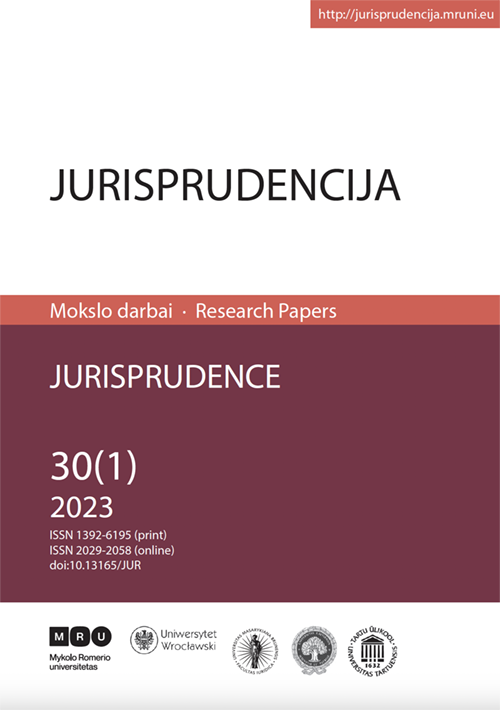LGBT+ ASMENŲ TEISIŲ UŽTIKRINIMAS TARPTAUTINĖSE ŽMOGAUS TEISIŲ INSTITUCIJOSE: EUROPOS ŽMOGAUS TEISIŲ TEISMO IR JUNGTINIŲ TAUTŲ ŽMOGAUS TEISIŲ INSTITUCIJŲ PRAKTIKA
ENSURING THE RIGHTS OF LGBT+ PERSONS IN INTERNATIONAL HUMAN RIGHTS INSTITUTIONS: THE PRACTICE OF THE EUROPEAN COURT OF HUMAN RIGHTS AND UNITED NATIONS HUMAN RIGHTS INSTITUTIONS
Author(s): Eitvydas ZurbaSubject(s): Gender Studies, Law, Constitution, Jurisprudence, Human Rights and Humanitarian Law
Published by: Mykolas Romeris University
Keywords: LGBT+; protection of private life; legal gender recognition; freedom of expression; freedom of association;
Summary/Abstract: This article analyzes the practice of the European Court of Human Rights and the United Nations human rights institutions: the Human Rights Committee (CCPR); the Committee on Economic, Social and Cultural Rights (CESCR); and the Committee on the Elimination of Discrimination against Women (CEDAW) regarding the rights of LGBT+ persons. The review compares the standards formed in the framework of the European Convention on Human Rights with the standards formed in the United Nations system, showing that, with exceptions, these two international legal systems have formed similar standards for the right to the protection of private and family life, the right to disseminate information about LGBT+ topics, and the right to peaceful gatherings of LGBT+ individuals. The article analyzes the latest practice in these areas, drawing historical analogies and thereby making reasonable assumptions about how the practice of the European Court of Human Rights and the United Nations human rights institutions could develop in the future.
Journal: Jurisprudencija
- Issue Year: 30/2023
- Issue No: 1
- Page Range: 57-77
- Page Count: 21
- Language: Lithuanian

